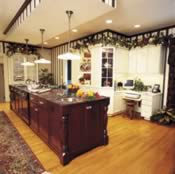KITCHEN ESSENTIALS
Creating a Kitchen That People Will Want to Live In
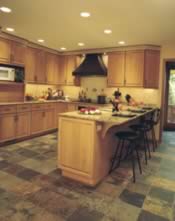
Photo by: Charles Ward
Contrasts
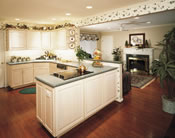
Photo by: Charles Ward. Kitchens have evolved from utilitarian workspaces to favorite spots, open to the primary living areas of the home.
Appliances
Attractive in both contemporary and traditional settings, stainless steel appliances are widely used. The pewter finish is particularly popular. Other appliances are often concealed with wood panels. This is especially true in kitchens that are open to formal living areas. Bosch makes a dishwasher with all the controls hidden for a total cabinet look. Fisher & Paykel makes a dishwasher drawer that is also hidden. Another trend is to include two ovens and two dishwashers.
Counters
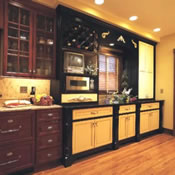
Photo by: Charles Ward. The notion that “everything must match” has been replaced with an emphasis on variety in the materials used throughout the kitchen.
Storage
To the axiom, “you can never have enough storage,” the designers added, “make the best use of the storage you have.” Roll-out shelves, vertical tray dividers and pull-out can pantries provide easy access. Drawer inserts keep silverware, utensils and spices organized. Recycling bins make quick work of trash. Appliance garages give counters a clean look by hiding toasters and can openers.
Floors
It’s important to choose flooring material consistent with the rest of the home. Tile is distinctive, but it can be cold if not heated underneath and its hard surface may require an area rug in work areas where prolonged standing occurs.
Decorating
Vivid colors are in vogue because they add life and energy to a room. But it’s most cost effective to choose neutral colors in more expensive items such as counters, cabinets and floors and reserve more daring choices for items that are easier to replace, such as paint and wallpaper.
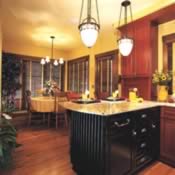
Illumination
Track lighting has largely been replaced with recessed, adjustable can lights that can be aimed at different work areas. Decorative lighting fixtures are often added to spotlight a dining area or work island and accent lighting is used inside display cabinets, on top of wall cabinets and in the toe space around islands.
